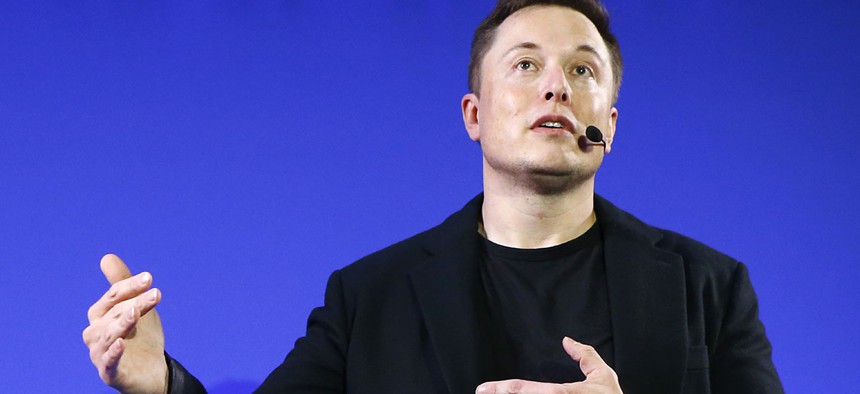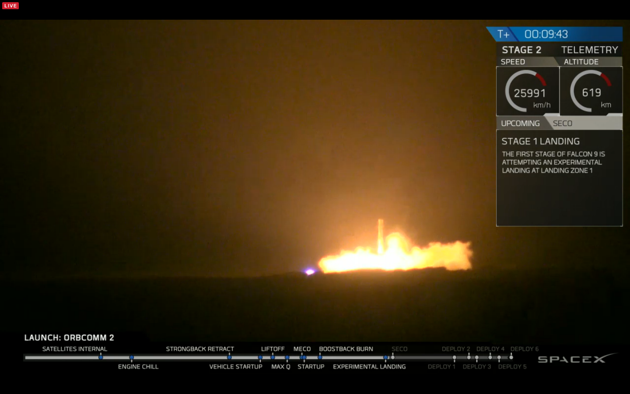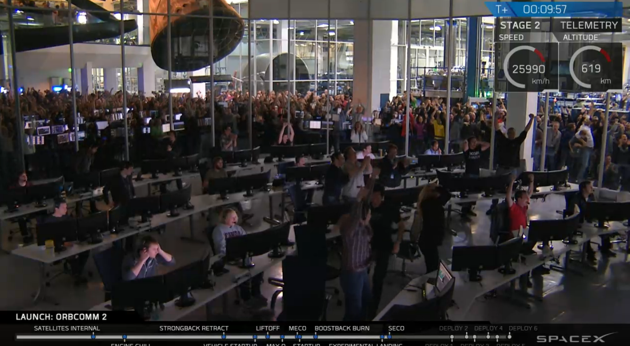Elon Musk Triumphs: SpaceX Vertically Launches Orbital Rocket

SpaceX CEO Elon Musk Francois Mori/AP File Photo
The company has finally achieved the goal it has pursued for years.
On Monday evening, for the first time in aerospace history, a rocket took off vertically from its launchpad, pierced the boundary of space and deposited its second stage into orbit, and returned intact to Earth, landing upright not far from where its journey began.
The private American company SpaceX—and its self-avowedly supervillain-esque CEO, Elon Musk— have at last seized the quarry that their company has pursued for years: VTOL, or the Vertical Take Off and Landing of an orbital rocket.
The task was completed by a Falcon 9 rocket, which launched from Cape Canaveral Air Force Station in Florida at 8:29 p.m. Eastern time. Even if the take-off had not gone successfully, the launch signified a return to flight for SpaceX: The company had not successfully launched a rocket since a different Falcon 9 exploded immediately after take-off in June.

The company had attempted two previous vertical landings. In January of this year, and again in April, a Falcon 9 rocket failed to touch down on the custom-built robotic barge waiting for it in the middle of the Atlantic Ocean. Both times, the rocket nearly hit its mark, before a system failed and the entire vehicle toppled over:

The company’s quest took on new urgency last month. Two days before Thanksgiving, Blue Origin, a space tourism company owned by Jeff Bezos, announced that it had successfully launched an uncrewed rocket and landed it upright in the Arizona desert. Musk congratulated Bezos on Twitter after the launch, but he and his team were quick to highlight, correctly, that Blue Origin’s rocket could never have entered orbit.
(“Congrats SpaceX on landing Falcon's suborbital booster stage. Welcome to the club!,” tweeted Bezos on Monday, gleefully ignoring the orbital-suborbital difference.)
This double victory—two successful reusable rockets, from two different corporations—signals a new era in spaceflight. Space agencies have rarely managed to salvage launch vehicles after lift-off. The Space Shuttle’s solid rocket boosters had to be recovered after violent splashdowns, and they required months of repair to again hurl the crewed vehicle into orbit.

And in 2004, SpaceShipOne became the first commercial crewed vehicle to enter space and return intact and reusable. But SpaceShipOne required a jet’s assistance to take off, and, like Bezos’s New Shepard system, it could not enter orbit.
But those two rockets had different tasks. Never before has a craft pulled off an orbital deployment—the second stage of Falcon 9 released 11 private ORBCOMM satellites on Monday evening—and had its first stage return to the ground intact. The Falcon 9 launch system works—or, at least, it has worked once—and the company can start taking on bigger missions, aiming higher than before. And the true triumph doesn’t just belong for Musk, for now every space agency in the world knows: A reusable, orbital rocket is possible.



